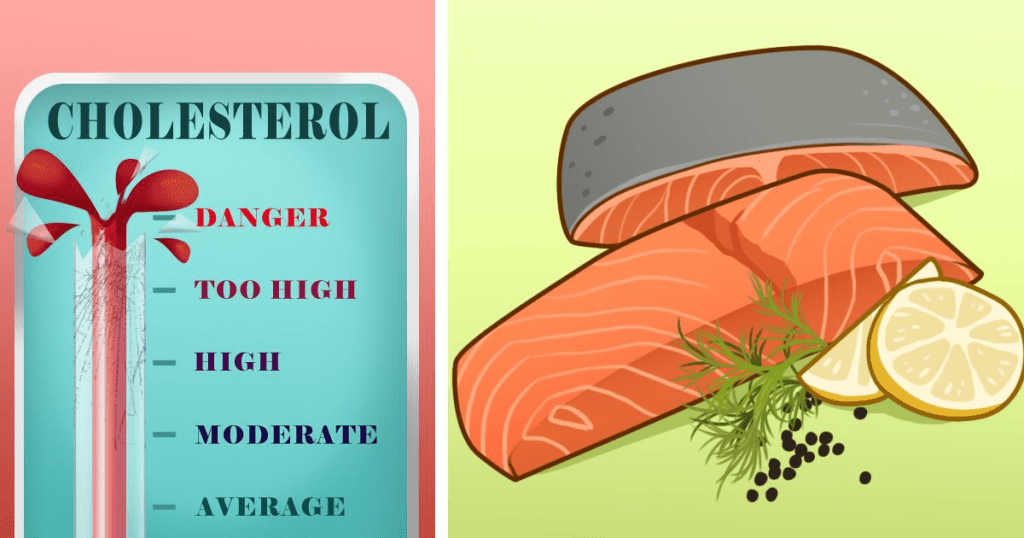No one wants to hear that they have high cholesterol. Not only can it make you feel uneasy, but high cholesterol can also have serious health consequences, such as hardening of the arteries, increased risk of stroke, and heart attacks. For many, the first instinct is to resort to medication, but there are ways to manage cholesterol naturally by making simple lifestyle changes at home. Often, these adjustments can lead to significant improvements, helping you manage your cholesterol levels without prescription drugs. Here are five effective steps you can take at home to keep your cholesterol in check.

Understanding Cholesterol and Its Impact on Health
Cholesterol is a fatty substance in your blood that your body needs for several vital functions. However, there are two main types: low-density lipoprotein (LDL), often called “bad” cholesterol, and high-density lipoprotein (HDL), or “good” cholesterol. Too much LDL can cause plaque buildup in your arteries, leading to serious cardiovascular issues, while HDL helps remove excess cholesterol from the bloodstream. Understanding the balance between these two types can help guide you in making choices to improve your health.
1. Cut Out Trans Fats and Reduce Saturated Fats
Reducing or eliminating trans fats and limiting saturated fats in your diet is one of the most effective ways to manage cholesterol. According to the Harvard Medical School, trans fats raise LDL cholesterol and lower HDL, a harmful combination. Trans fats are often found in processed foods, baked goods, and fried foods, so it’s essential to check ingredient labels and avoid products with “partially hydrogenated oils.”
Saturated fats, although less harmful than trans fats, can also contribute to higher LDL levels. Foods like red meat, butter, and full-fat dairy products contain saturated fats, and while you don’t have to eliminate them entirely, try to consume these foods in moderation. Opting for leaner cuts of meat or plant-based proteins can make a difference in your cholesterol levels over time.
2. Add More Healthy Fats to Your Diet
Not all fats are bad for you. Monounsaturated and polyunsaturated fats are beneficial and can help lower LDL cholesterol levels. Incorporating foods rich in these healthy fats, like olive oil, avocados, and nuts, can positively affect your cholesterol levels.
Additionally, omega-3 fatty acids, a type of polyunsaturated fat found in fish such as salmon, trout, and sardines, not only support heart health but also improve HDL levels. The American Heart Association recommends consuming at least two servings of fatty fish per week. If fish isn’t a part of your regular diet, consider using plant-based oils like soybean or canola oil in cooking to increase your intake of healthy fats.
3. Increase Your Fiber Intake
Dietary fiber, especially soluble fiber, plays a critical role in lowering cholesterol levels. Soluble fiber binds to cholesterol in the digestive system, helping to remove it from the body. Foods like oatmeal, beans, lentils, fruits, and vegetables are excellent sources of soluble fiber that can make a real impact on your health.
Whole grains are another fantastic source of fiber. Swapping out refined grains for whole grains in your meals—such as choosing brown rice over white rice or whole-wheat bread instead of white bread—can help you meet your daily fiber goals. According to the Mayo Clinic, even just a few additional grams of fiber each day can make a measurable difference in LDL levels.
4. Get Moving: Exercise Regularly

While many don’t associate exercise with cholesterol management, physical activity can significantly influence cholesterol levels. Aerobic exercise, such as walking, cycling, or swimming, raises HDL levels, which helps to balance out LDL cholesterol. According to WebMD, engaging in 30 minutes of aerobic exercise on most days of the week can make a positive impact on cholesterol levels and also help with weight management.
If committing to 30 minutes of exercise seems daunting, try breaking it into three 10-minute sessions throughout the day. A brisk walk after meals, some dancing in your living room, or a quick bike ride can all contribute to better cholesterol levels and improved overall health.
5. Manage Stress Levels
Chronic stress can indirectly influence cholesterol levels by triggering hormonal responses that increase LDL levels. When stressed, many people turn to unhealthy habits, such as overeating or consuming high-sugar and high-fat foods, which can worsen cholesterol. According to health experts, finding ways to manage stress can be essential to maintaining healthy cholesterol levels.
Engaging in relaxation techniques like meditation, deep breathing exercises, or even taking time out for hobbies you enjoy can help reduce stress. Laughing, spending time with friends, or enjoying a favorite activity can also lower stress and improve your mental well-being. Remember, a balanced lifestyle includes both physical health and mental peace.
Practical Tips to Implement These Changes in Your Daily Routine
Incorporating these changes may seem overwhelming, but starting small and gradually building new habits can make the process smoother. Here are a few practical tips to help you get started:
- Plan Your Meals: Prepare meals at home using whole foods and avoid processed ingredients. Meal planning can help you make healthier choices consistently.
- Choose Heart-Healthy Snacks: Keep a supply of nuts, fruits, or whole-grain snacks available to help curb hunger without reaching for unhealthy options.
- Set a Regular Exercise Schedule: Find an exercise routine that you enjoy, and make it part of your daily or weekly schedule. Having a workout buddy can also help keep you motivated.
- Practice Mindfulness for Stress Reduction: Start with just a few minutes of meditation each day to keep stress levels manageable, or take a few deep breaths when you feel tension building.
- Stay Hydrated: Water helps maintain overall health, and staying hydrated can prevent you from mistaking thirst for hunger, reducing the temptation to reach for unhealthy snacks.
Final Thoughts: Taking Control of Your Health Naturally
Managing cholesterol doesn’t always require medications. By making small adjustments to your diet, adding healthy fats, increasing fiber, staying active, and reducing stress, you can make meaningful changes to your cholesterol levels. With these simple yet effective practices, you’ll not only lower your cholesterol but also contribute to your overall health and well-being.
Take the time to assess your habits and make gradual, lasting changes. And remember, keep your healthcare provider informed of any changes you’re making to your lifestyle, especially if you’re already on medication. With consistency and determination, you may be able to manage your cholesterol naturally and avoid medications altogether.


